Balut was always that midnight treat my Tito would bring home from his evening walks - just simple, steaming hot, with a pinch of rock salt. But everything changed when my Lola showed me this sizzling balut version at a hole-in-the-wall carinderia in Binondo.
The way the golden-brown balut sizzled in that spicy-savory sauce, releasing that incredible aroma of garlic and ginger, completely transformed this humble street food into something I'd proudly serve at family gatherings.
After countless attempts to recreate that unforgettable dish, I've finally perfected this restaurant-style Sizzling Balut recipe that makes even my balut-hesitant friends come back for seconds.
Once you try this elevated version with its perfectly crispy coating and that mouthwatering sauce that clings to every bite, you'll never look at balut the same way again.
What is Balut?
Balut is a popular street food and delicacy in Southeast Asian countries, particularly the Philippines, Vietnam, Cambodia, and Laos. It consists of a fertilized duck egg that is incubated for about 14-21 days and then boiled and eaten from the shell. The egg contains a partially developed duck embryo, along with the yolk and egg white.
In Filipino culture, balut is often eaten as a snack or appetizer, sometimes accompanied by vinegar, salt, and/or chili garlic sauce. It's valued both as a tasty treat and for its high protein content. Vendors often sell balut in the evening or late at night, calling out "Baluuut!" to attract customers.
Jump to:
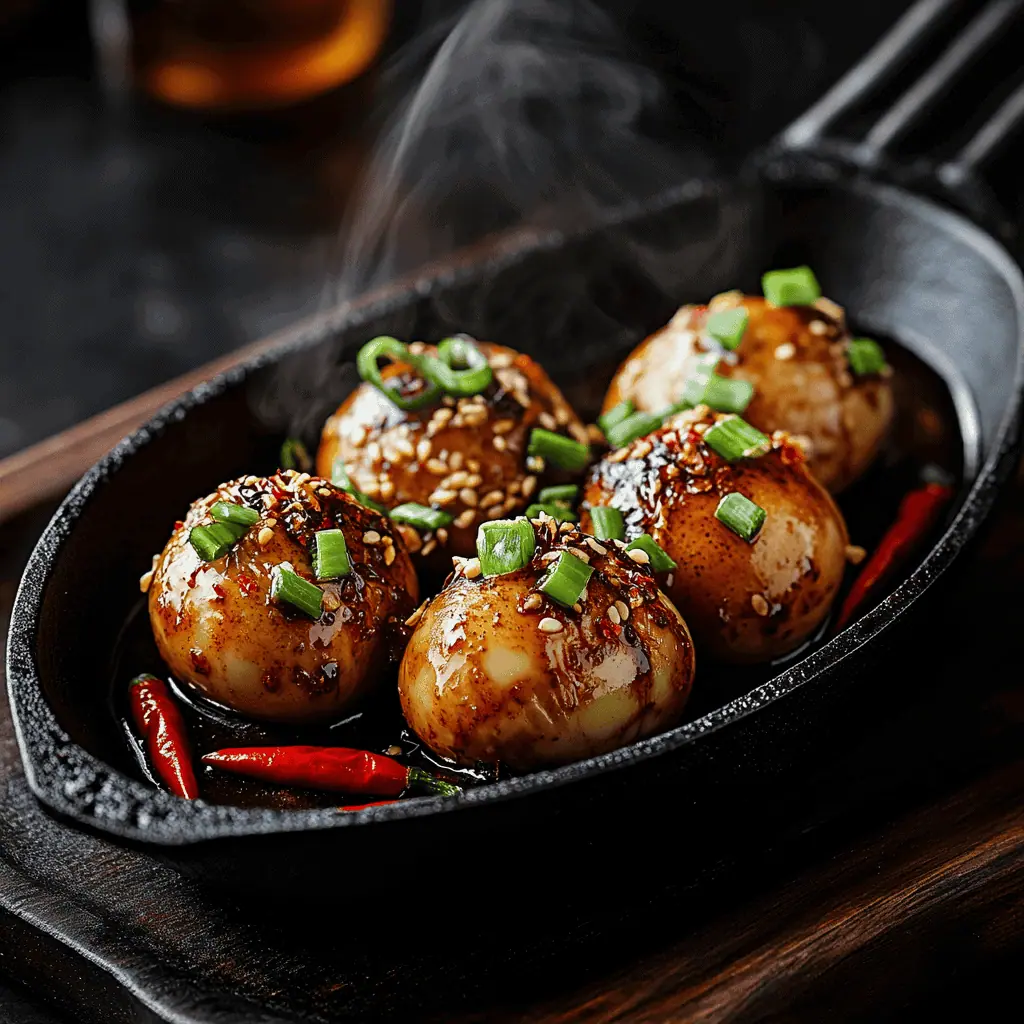
Why You'll Love This Recipe
- Restaurant-quality presentation
- Perfect balance of spicy and savory flavors
- Elevated street food experience
- Great conversation starter for gatherings
- Pairs perfectly with cold beverages
- Ready in just 35 minutes
Ingredients
Each ingredient in this Sizzling Balut recipe plays a purposeful role in creating the perfect balance of flavors and textures. The all-purpose flour creates a light, crispy coating that protects the delicate balut during frying. Aromatics like shallots, garlic, and ginger form the flavor foundation, while Thai chilies provide adjustable heat.
The combination of soy sauce for saltiness and oyster sauce for rich umami depth creates a complex, savory sauce that clings perfectly to the fried balut. Bell peppers add color, subtle sweetness, and texture contrast, while green onions bring a fresh finish that brightens the dish's rich flavors.
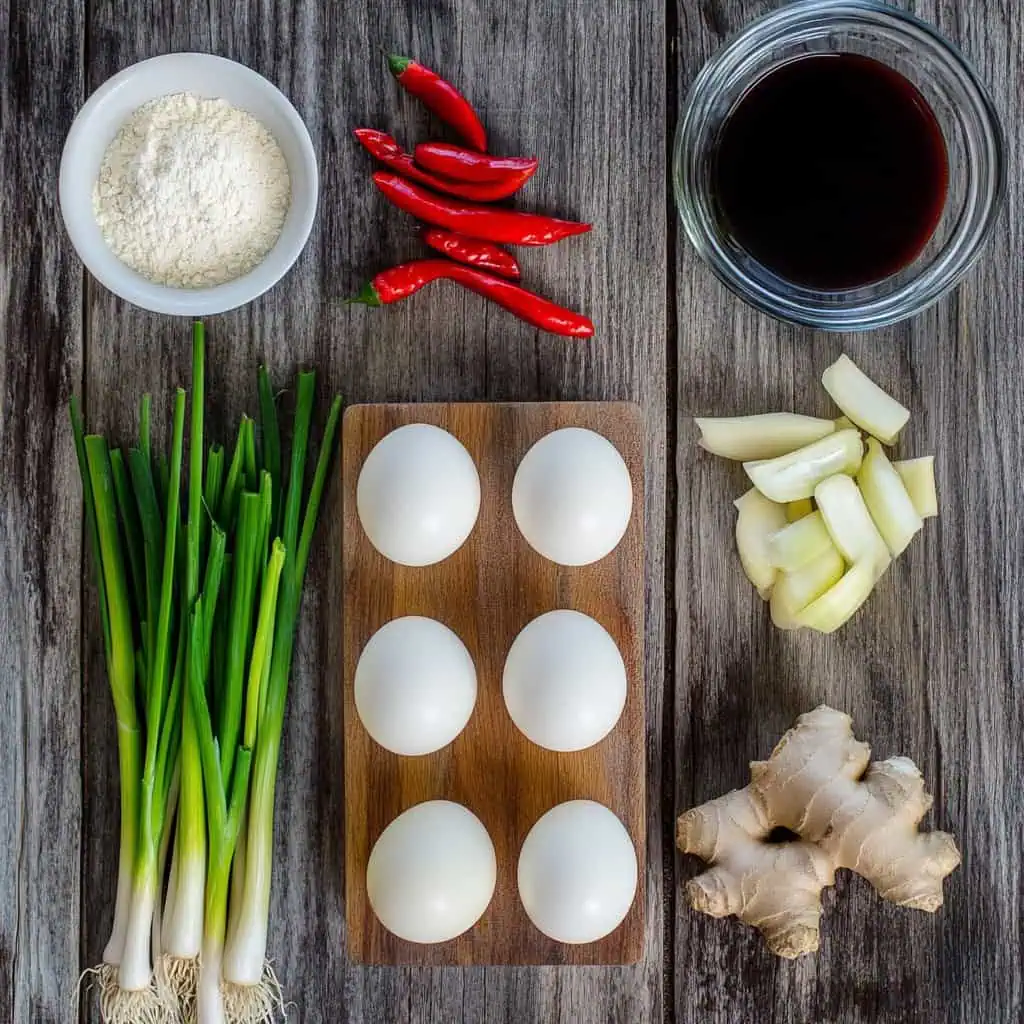
For the Balut:
- 4 balut, cooked and peeled (fertility day 16-18 recommended)
- ¼ cup all-purpose flour
- ¼ cup canola oil
For the Sauce:
- 2 shallots, peeled and chopped
- 2 cloves garlic, peeled and minced
- 1 thumb-size ginger, peeled and minced
- 3 Thai chili peppers, minced
- ½ small red bell pepper, seeded and chopped
- 1 tablespoon soy sauce
- 3 tablespoons oyster sauce
- ¼ cup water
- 1 tablespoon green onions, chopped
- Ground black pepper to taste
Equipment
- Sizzling plates - For the signature sizzling presentation that enhances flavors and creates that restaurant experience
- Wide skillet or wok - For frying the balut and preparing the flavorful sauce
- Strainer - For draining excess oil from the fried balut for a crispy but not greasy result
- Sharp knife - For precise chopping of aromatics that release more flavor
- Cutting board - For safe ingredient preparation
- Measuring cups and spoons - For accurate measurements that ensure perfect sauce balance
- Kitchen tongs - For handling the balut safely while frying and coating with sauce
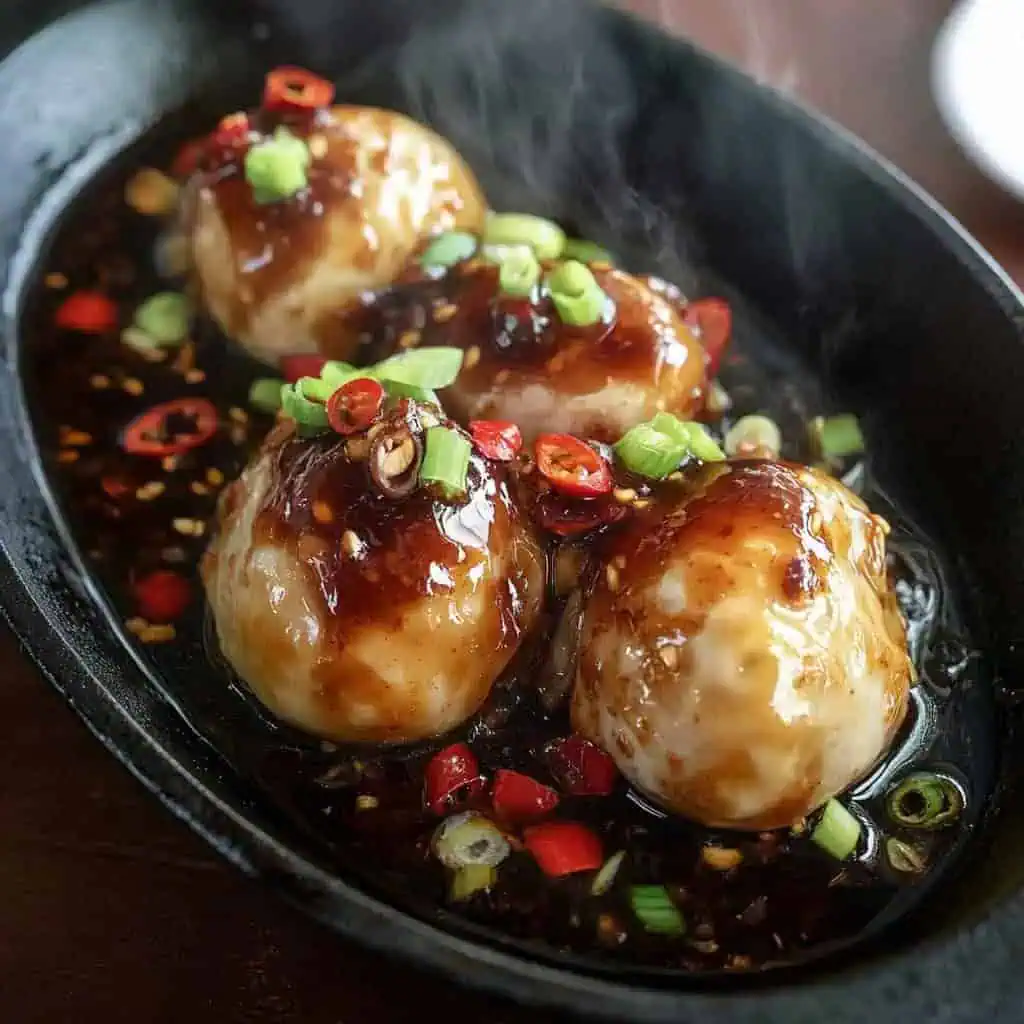
How To Make
- Begin by preheating your sizzling plates in a 350°F (175°C) oven. While plates heat, carefully peel the cooked balut, keeping the yolk and embryo intact. Place all-purpose flour in a shallow plate for dredging.
- Heat canola oil in a pan over medium heat (350°F/175°C). Test the temperature by dropping a small piece of flour – it should sizzle immediately. Gently coat each balut in flour and fry until golden brown, about 2-3 minutes per side. Remove and drain on paper towels.
- For the sauce, remove excess oil from the pan, leaving about 1 tablespoon. Over medium heat, sauté chopped shallots for 1 minute. Add minced garlic and ginger and cook for 30 seconds, then add minced Thai chili peppers and chopped bell pepper. Cook for 2 minutes.
- In a bowl, combine soy sauce, oyster sauce, and water. Pour into the pan and bring to a boil. Add the fried balut, coating well with sauce. Transfer everything to the preheated sizzling plates, garnish with chopped green onions, and serve immediately while sizzling.
- For best results, serve as pulutan (appetizer) with ice-cold beer or with garlic rice (sinangag) for a complete meal. Offer spiced vinegar on the side if desired.

Tips from Lola's Kitchen
- Choose balut that's 16-18 days old for the ideal texture balance between developed embryo and creamy yolk
- Test oil temperature properly by dropping a small piece of flour – it should sizzle immediately but not smoke
- Don't overcrowd the pan when frying as this lowers the oil temperature and results in soggy balut
- Adjust chili amount according to your preference – start with fewer for milder heat if you're sensitive to spice
- Pat balut dry before dredging in flour for better coating adhesion and crispier texture
- Listen for the sizzle when transferring to the hot plate – this sound indicates your dish will have that authentic presentation
- Have all sauce ingredients prepped before cooking to ensure quick and perfect sauce consistency
Substitutions
- Balut: While traditional balut is unique, hard-boiled quail eggs can be used for a milder introduction to this cooking style
- Thai chilies: Bird's eye chilies or regular red chilies work well depending on heat preference
- Oyster sauce: Hoisin sauce or mushroom sauce can provide similar umami depth
- Shallots: Regular red onions work fine but use slightly less as they're stronger
- Canola oil: Any neutral cooking oil like vegetable or corn oil can be substituted
Troubleshooting
- Sauce too thick: Add water, 1 tablespoon at a time, while stirring continuously
- Sauce too thin: Simmer longer to reduce or add ½ teaspoon cornstarch mixed with 1 tablespoon water
- Balut breaking: Handle gently during peeling and ensure oil is hot enough before frying
- Not sizzling enough: Preheat plates longer or at a higher temperature
- Sauce separating: Whisk vigorously and reheat slowly to re-emulsify
- Too spicy: Add a teaspoon of honey or sugar to balance the heat
Storage & Reheating
- Fresh is best: Sizzling balut is ideally consumed immediately for optimal texture and flavor
- Refrigeration: If necessary, store for up to 24 hours in an airtight container, keeping sauce separate from balut
- Freezing: Not recommended as the texture significantly deteriorates
- Reheating:
- Heat sizzling plate until very hot in oven (400°F/200°C)
- Warm sauce separately in a small pan
- Reheat balut by flash-frying for 30 seconds per side
- Combine just before serving on the hot plate
- Add a splash of water to the sauce if it's thickened too much
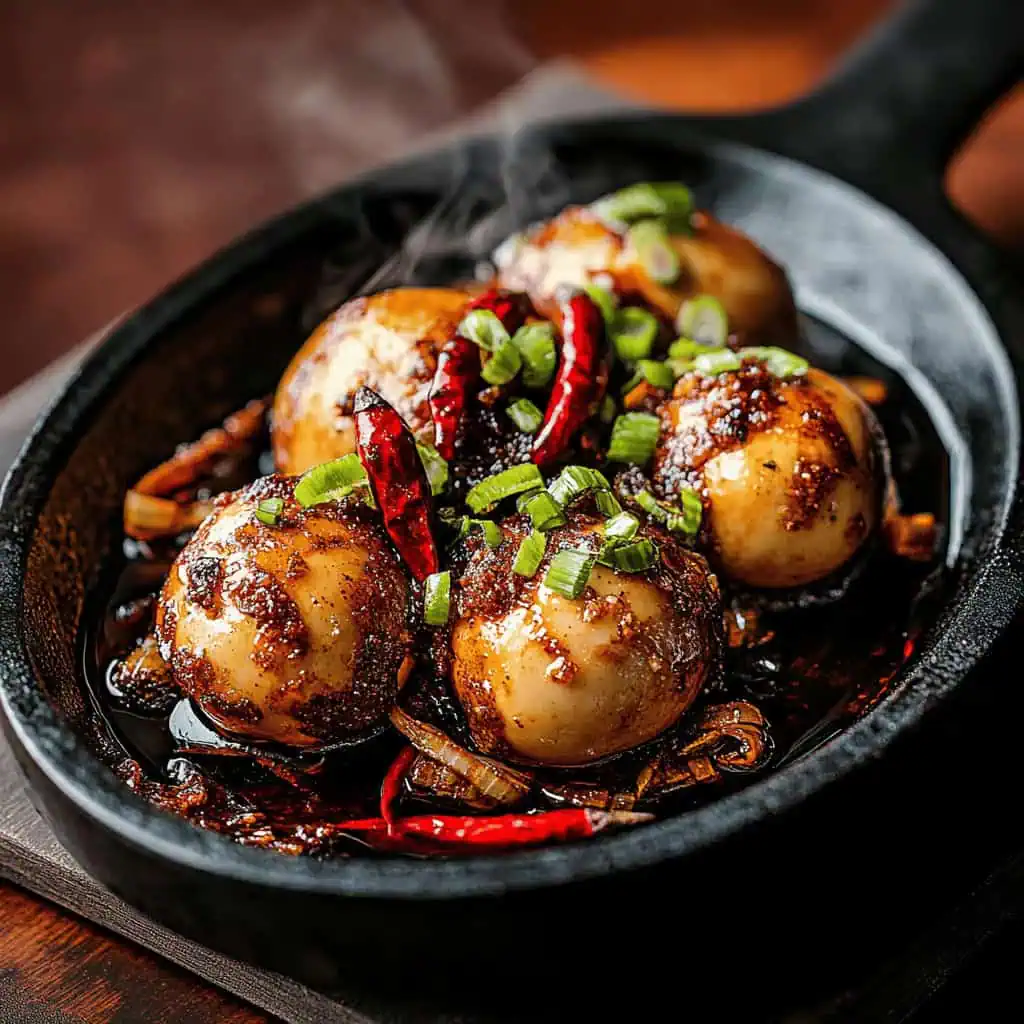
FAQ
What's the best way to peel balut?
Crack the top gently, sip the broth, then carefully peel from the top down using a spoon to help separate the shell from the egg.
Can I make this less spicy?
Yes, reduce or omit the Thai chilies according to taste. You can also remove the seeds for milder heat while maintaining flavor.
Why use sizzling plates?
They maintain temperature and create the signature sizzling effect that enhances flavor through caramelization and aroma release.
How do I know if balut is fresh?
Fresh balut should feel heavy for its size and have no unusual odors. When purchasing, ask for eggs that were harvested recently.
Can I prepare this in advance for a party?
Yes, you can fry the balut and prepare the sauce up to 4 hours ahead, but keep them separate and only combine on hot plates just before serving.
What if I can't find balut in my area?
Check Asian markets, particularly Filipino or Southeast Asian specialty stores. Some may require pre-ordering.
Is there a vegetarian alternative to this recipe?
While traditional balut can't be replicated, the sauce and cooking method work well with pan-fried tofu, mushrooms, or vegetable dumplings for a similar experience.
Related
Looking for other recipes like this? Try these:
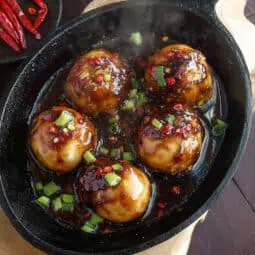
Sizzling Balut (Spicy Duck Egg Delicacy) | Pritong Balut sa Sizzling Plate
Equipment
- Sizzling plates (mga sizzling plate) For the signature sizzling presentation
- Wide skillet or wok (kawali) For frying and sauce preparation
- Strainer [Salaan] For draining excess oil
- Sharp knife (matulis na kutsilyo) For chopping ingredients
- Cutting board (Sangkalan) For ingredient preparation
- Measuring cups and spoons (Panukat) For precise measurements
- Kitchen tongs (Sipit) For handling the balut safely
Ingredients
For the Balut
- 4 balut cooked and peeled (fertility day 16-18 recommended)
- ¼ cup all-purpose flour harina
- ¼ cup canola oil mantika
For the Sauce
- 2 shallots sibuyas tagalog, peeled and chopped
- 2 cloves garlic bawang, peeled and minced
- 1 thumb-size ginger luya, peeled and minced
- 3 Thai chili peppers siling pangsigang, minced
- ½ small red bell pepper bell pepper, seeded and chopped
- 1 tablespoon soy sauce toyo
- 3 tablespoons oyster sauce sauce ng talaba
- ¼ cup water tubig
- 1 tablespoon green onions dahon ng sibuyas, chopped
- Ground black pepper paminta to taste
Instructions
- Begin by preheating your sizzling plates in a 350°F (175°C) oven. While plates heat, carefully peel the cooked balut, keeping the yolk and embryo intact. Place all-purpose flour (harina) in a shallow plate for dredging.
- Heat canola oil (mantika) in a pan over medium heat (350°F/175°C). Test the temperature by dropping a small piece of flour – it should sizzle immediately. Gently coat each balut in flour and fry until golden brown, about 2-3 minutes per side. Remove and drain on paper towels.
- For the sauce, remove excess oil from the pan, leaving about 1 tablespoon. Over medium heat, sauté chopped shallots (sibuyas tagalog) for 1 minute. Add minced garlic (bawang) and ginger (luya) and cook for 30 seconds, then add minced Thai chili peppers (siling pangsigang) and chopped bell pepper. Cook for 2 minutes.
- In a bowl, combine soy sauce (toyo), oyster sauce (sauce ng talaba), and water (tubig). Pour into the pan and bring to a boil. Add the fried balut, coating well with sauce. Transfer everything to the preheated sizzling plates, garnish with chopped green onions (dahon ng sibuyas), and serve immediately while sizzling.
- For best results, serve as pulutan (appetizer) with ice-cold beer or with garlic rice (sinangag) for a complete meal. Offer spiced vinegar (suka) on the side if desired.
Tips from Lola's Kitchen
- Choose balut that's 16-18 days old for the best texture
- Test oil temperature by dropping a small piece of flour - it should sizzle immediately
- Don't overcrowd the pan when frying
- Adjust chili amount according to your spice preference
- Pat balut dry before dredging in flour for better coating
Nutrition
The Story Behind Sizzling Balut (Spicy Filipino Duck Egg Delicacy)
Growing up in the bustling streets of Manila, balut vendors' familiar evening calls of "Baluuut! Baluuut!" were as much a part of our neighborhood's soundtrack as the jeepney horns and children's laughter. This fertilized duck egg delicacy, traditionally enjoyed straight from its shell with a sprinkle of rock salt or spiced vinegar, has been a Filipino street food staple for generations.
But the evolution of balut into its sizzling form tells a fascinating story of Filipino culinary innovation. In the early 2000s, creative restaurateurs in Manila's entertainment districts began experimenting with new ways to serve this humble street snack. The inspiration likely came from the popularity of other sizzling dishes like sisig and gambas, where the dramatic presentation on a hot plate adds both theatrical flair and enhanced flavor.
The true genius of Sizzling Balut lies in how it bridges traditional street food culture with modern Filipino restaurant cuisine. By coating the balut in a light batter and introducing a savory-spicy sauce influenced by Chinese-Filipino flavors (think oyster sauce and ginger), innovative cooks transformed what was once purely a street food experience into a pulutan (bar snack) worthy of restaurant menus. Today, you'll find this dish in establishments ranging from hole-in-the-wall carinderia spots to upscale Filipino fusion restaurants.
What makes this dish particularly special is how it respects balut's authentic flavors while elevating them through new cooking techniques. The sizzling preparation method adds textural contrast – the crispy exterior from frying, the rich sauce coating, and the familiar tender interior that balut lovers crave. It's a perfect example of how Filipino cuisine continues to evolve while honoring its deep cultural roots.
This recipe has become increasingly popular among younger Filipinos and adventurous food enthusiasts who might have been hesitant to try traditional balut. The familiar cooking method and flavorful sauce make it more approachable while still maintaining its status as an authentic Filipino delicacy. Whether you're a balut veteran or a curious first-timer, this sizzling version offers a unique and delicious way to experience one of the Philippines' most iconic foods.
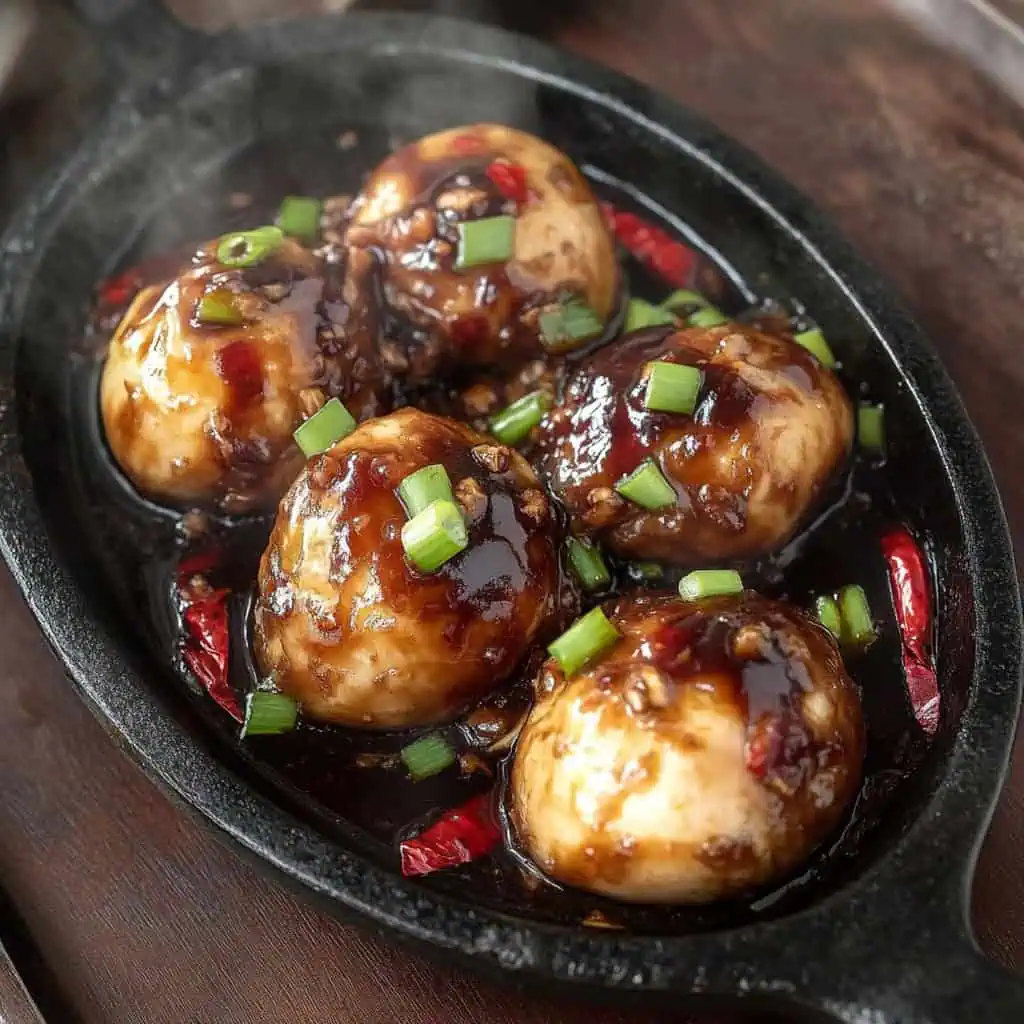









Comments
No Comments